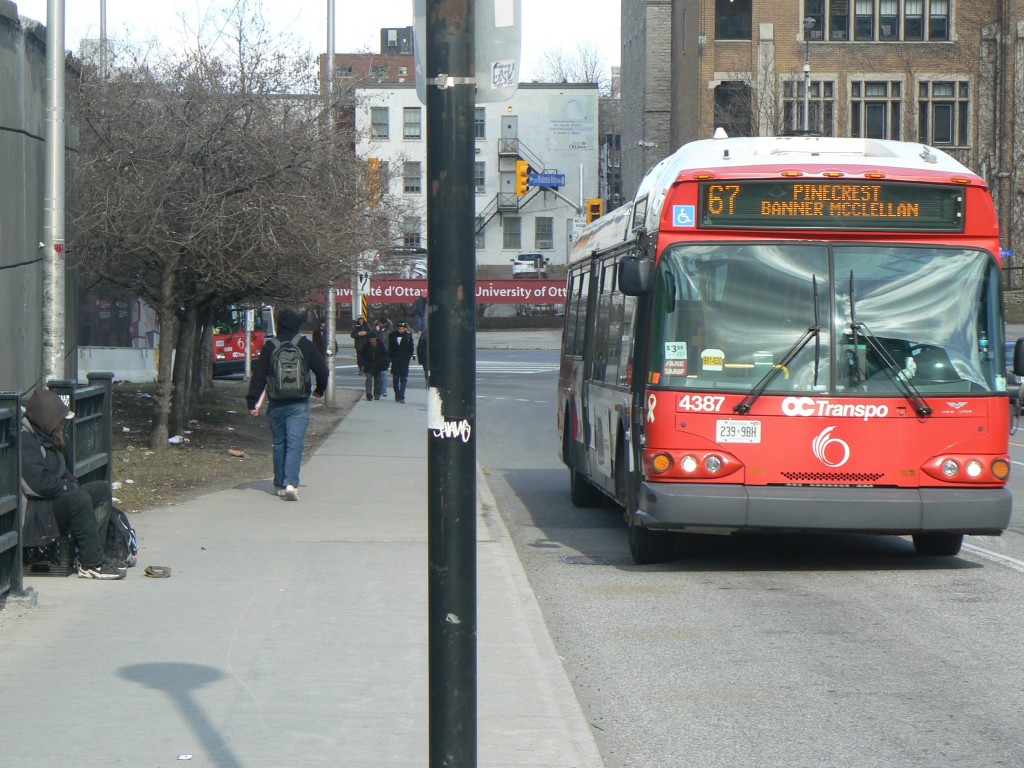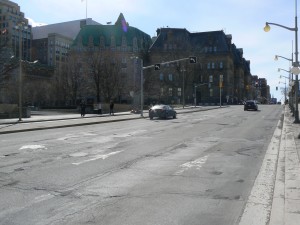New shoes and a deficit: Canada’s federal budget contrasts with the U.S.
Federal budget day in Canada is entertaining. Justin Trudeau’s government introduced its first budget on March 22. It was the biggest headline for two days before it happened, but was bumped to third place that morning after the tragic terrorist attack in Brussels and the death of former Toronto Mayor Rob Ford.
The media, politicians, academics, and ordinary citizens in Canada get strangely excited about a government budget. Everyone talks about what they hope to get, what they hope not to get, and especially about what they don’t want others to get. Finance Minister Bill Morneau’s budget speech, like others for decades before it, was broadcast live on radio and television, streamed online, and written into rapidly revised online articles from major newspapers. Government spending plans in the United States do not interrupt afternoon soap operas and cartoons. They do in Canada. That said, our Prime Minister rarely ruins the primetime TV schedule with a State of the Union address or chat from behind his desk.
An odd budget day tradition in Canada is for the Minister of Finance to wear a new pair of shoes. It supposedly dates back to the first federal budget delivered by Sir John Rose in 1868, but has been a publicized ritual since 1960, although not every minister has consistently upheld the practice. The style of shoes has varied, ranging from Oxfords and loafers to sneakers, work boots, and on one occasion, a pair of Inuit mukluks. Mr. Morneau opted for traditional black Oxfords, and unveiled them recently while meeting with kids at a Toronto youth club.

A homeless man sits on the Mackenzie King Bridge in downtown Ottawa while an OC Transpo bus passes. The 2016 budget has measures to help the homeless and improve public transit. Photo by James Morgan
Much of the anticipation about the budget was because it was surely to be different than those from the former Conservative government. The Liberals didn’t disappoint on that promise. The days of big government in Canada are back. The priorities of social programs, environmental protection, and youth employment harken back to the days when Justin Trudeau’s late father Pierre was Prime Minister. Better assisting indigenous people, and reducing poverty and homelessness are key themes in the budget, but the biggest is committing federal funds for urban transit and highway improvements. The current spring thaw has highlighted the bad state of some Canadian roads, many of which have developed potholes that could swallow a small hatchback whole. Tax cuts, a major theme of the Conservative years, are more focused on middle-class families under the Liberals.

Canada’s 2016 budget includes a big boost on road and highway spending. Wellington Street in Ottawa, looking towards the Langevin Block, home of the Prime Minister’s Office, needs some repairs. Photo by James Morgan
Of course with higher levels of spending come budget deficits. An overall federal deficit of $29.5 billion is projected for this year, three times the amount the Liberals said it would be during the election campaign last October. And there is no guarantee the government will return to a zero deficit by the next election in 2019. To Americans, reading about a federal deficit of $29.5 billion probably leads to coffee being spit out, head shaking, and hilarious laughter. The U.S. federal deficit for this year is projected to be $544 billion.
Canada’s 2016 federal budget will be easily approved by Parliament. The governing Liberals have the majority of seats in the House of Commons. Yes, the opposition parties will do their job and oppose it, and they will vote against it, but that isn’t going to make much difference. Conservative Leader Rona Ambrose has called the budget “reckless spending” (a favorite Canadian political insult), and the New Democrats have said spending isn’t generous enough. The opposition arguments are basically that the budget is too much and too little. It’s awfully difficult to oppose the budget of a government that has only been in office for five months after voters decisively voted for it over the alternatives. Unlike in the United States though, the administration’s spending plans will basically sail through and become reality. Opposing legislators won’t be able to shut the government down by starving it of operating funds, as has happened three times in the past 20 years in Washington. Terms like “debt ceiling” and “fiscal cliff” don’t get used here either.
Government budget season is a unique Canadian political tradition. While New Englanders go to town meetings and Presidential primaries continue across the United States, we eagerly await for a man wearing new shoes to tell us what the government will both giveth and taketh away.







